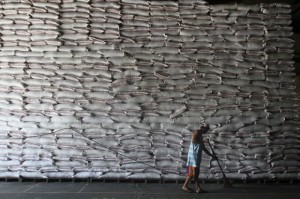Rice imports to boost buffer stocks
MANILA, Philippines—The National Food Authority (NFA) may have to import rice this year to boost buffer stocks of the staple for the lean months.
According to NFA Administrator Renan Dalisay, the government is considering importation as a viable option to meet the mandated 30-day buffer stock.
To meet the country’s daily rice consumption of 34,000 metric tons, the NFA may have to import about 500,000 MT before June, he said.
The NFA has to stock government warehouses with the grain to ensure stable supply and tends to compete with private traders in buying locally grown palay.
Dalisay said the NFA Council is still finalizing the terms of reference for the rice procurement, including the volume and ideal arrival period.
Article continues after this advertisement“By next week, we will have a final decision,” he said.
Article continues after this advertisementThe government estimates that there are enough rice stocks in the NFA warehouses to meet the nationwide daily requirement for the next 13 days.
Dalisay also assured the public that no substandard rice from Thailand entered the Philippines as part of last year’s government-to-government rice procurement deal.
The government has imported about 500,000 metric tons of rice as of September 2014. Some 300,000 MT of this was awarded to Thailand and the remaining 200,000 MT to Vietnam.
The imported rice was shipped to the Philippines in three tranches—200,000 MT (40 percent) on Oct. 15, another 200,000 MT (40 percent) on Nov. 15, and 100,000 MT (20 percent) on Dec. 15.
During the period, the Thai government was reported to have discovered in its rice audit that more than 90 percent of their existing stocks in state-run warehouses were substandard for commercial sale and were deemed “inedible.” These resulted in a loss of confidence among international buyers.
